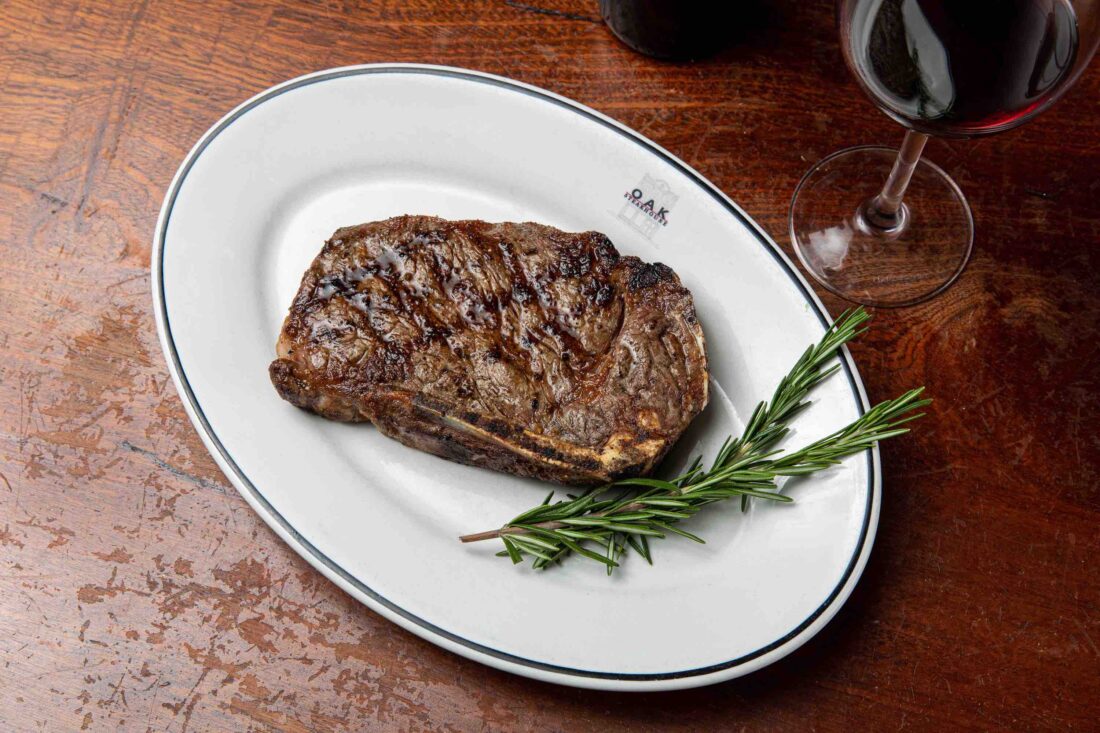When Jordan Arcuri received a last-minute call to compete on Food Network’s Chopped a few years ago, she had no clue that her episode’s baskets of mystery ingredients would focus on beef. “I have a steakhouse background, and I was up against a sushi guy and a biscuit guy,” she chuckles. “I thought, ‘Well, this is easy.’” Indeed, even with a dessert basket that required the use of calf’s foot jelly, Arcuri won the day—and earned the nickname “Beef Queen” in the process (hence her arm tattoo of a cow wearing a crown).

In her regular gig as the chef of upscale Oak Steakhouse in Nashville, Arcuri’s ingredients are never a mystery, and more often than not they’re centered on a beautifully marbled cut of steak sizzled to perfection in a cast-iron skillet. “We average about two hundred customers a night, 85 percent of whom order steak,” she says. “So yeah, we know how to cook a steak.”
Thoroughly convinced, we asked Acuri to share her top tips for turning out a steakhouse-quality steak at home. Follow them and you too might be hailed as beef royalty.
Go with cuts you love.
“My favorite cut is a New York strip, but don’t be shy about using the cut you prefer and are familiar with eating. Some people want a big, bone-in ribeye. Or if you like a filet, go for it. These tips work with any steak you choose.”
Keep the seasoning simple.
“After I let a steak get up to room temperature, and right before I cook it, I season both sides with salt and pepper only, because you don’t want to cover up the flavor of the beef. I’m a salt person, so more salt than pepper. Spread a teaspoon and a half of good flaky salt, like kosher salt or sea salt, on each side, a little less if using iodized salt. And a teaspoon of freshly cracked pepper on each side.”
Be a cast-iron chef.
Like many contemporary steakhouses, Oak prefers the control and even heat of cast-iron skillets. Coat the bottom with two to three tablespoons of olive oil and place over medium-high heat until the oil ripples but doesn’t smoke. Arcuri advises not to fret too much about crowding the ten- or twelve-inch skillet in the arsenal of most Southern home cooks: “You can definitely cook four filets or two normal-size strips at one time. If you’re cooking four strips, then you need to do two at a time.”
Don’t move!
Once you put the steak (or steaks) in the heated skillet, don’t push the meat around. “It’s about that initial moment in the hot pan that turns the salt and pepper into a crust. Aiming for medium rare, I go four minutes before flipping, five minutes for medium, and it will be beautiful.”
Baste, baby, baste.
“When you do flip that steak, immediately add to the skillet a sprig of thyme, a sprig of rosemary, one smashed garlic clove, and two tablespoons of butter. Increase those amounts a bit if cooking more than one steak. As the butter melts, spoon it over the steak while it cooks for another four or five minutes, which boosts the flavor of the meat and creates a golden-brown color.”
Give it a rest.
“When the second side is finished, I pull the steak and let it rest for four to five minutes to help keep the juices inside. Then you’re ready to slice and eat a steak that has a nice, crusty outside and a tender, juicy inside.”








